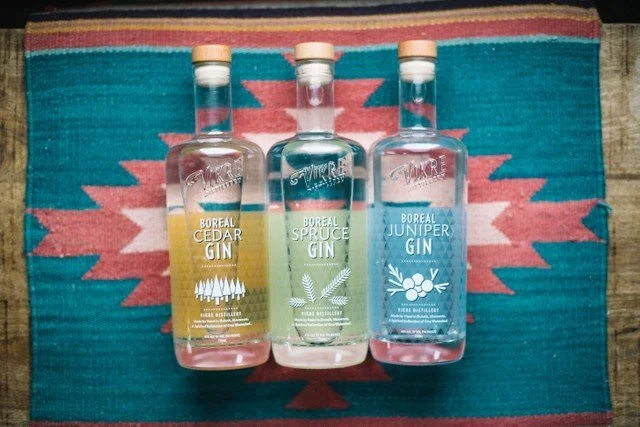What's the difference?
We are flavor first people, and we take great care to make each of our gins magically special. Each has a different set of over a dozen organic botanicals, and a different infusion process to coax out the precise flavor and balance we want for that gin.
Juniper Gin:
Is a sprightly and citrusy take on a traditional gin, making it perfect for classic cocktails or an amazing gin and tonic. It is sooooo smooth because we hone in on the berry and citrus notes of juniper berry and compliment them with fresh citrus peels, rhubarb, and pink peppercorn.
Spruce Gin:
Is gorgeously aromatic, floral, and herbal. It has extra piney notes, but not in a pine resin way. This is from soft spruce buds, lavender flowers, rosemary sprigs, and sage. Amazing in citrusy cocktails or for a martini of distinction.
Cedar Gin:
It's a cult favorite for a reason. Cedar is creative, complex, and subtly earthy. The juniper notes are softened with black currants, foraged sumac, and lots of baking spices like cardamom and ginger, plus a gentle cedar finish. Soften classic cocktails with it or use like a tequila or in an old fashioned.
How about the aquavits? Are you ready to take your aquavit knowledge to the next level?! Each Scandinavian country has different styles and regulations for aquavit.
In Sweden, aquavit is sometimes direct infused and often leans on sweeter botanicals like dill and fennel with less caraway. Danish aquavits are generally unaged and feature very caraway forward flavor.
Meanwhile, in Norway aquavits must be aged for at least 6 months and often incorporate many botanicals and citrus in addition to the caraway, with different styles intended to pair with different foods or occasions (eg. shellfish, mountain food, hikes, Christmas...)
Our Øvrevann aquavit is unaged, making it a little more Danish in style (it's OK, Norway and Denmark were one country up until a couple centuries ago! ;), but with the infusion of citrus and other botanicals like Norwegian aquavit.
Our Voyageur aquavit is aged for over a year in cognac casks, making it more Norwegian in style and particularly smooth for sipping.


